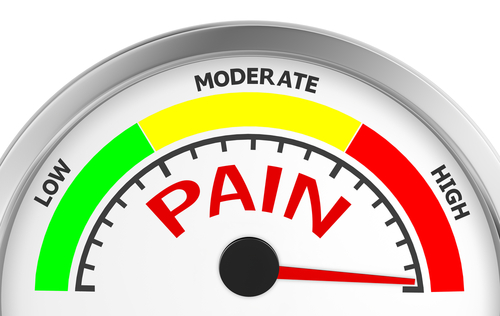Opioid Prescriptions Underreported for Treating Pain in Hemophilia, Study Finds

More opioids were prescribed to treat pain in adults and children with hemophilia than was reported in U.S. national datasets, a new study shows.
As such use carries a risk for opioid‐related complications, hemophilia treatment centers (HTC) need to take a more active role in pain management and provide alternatives, researchers say.
The study, “Opioid exposure in haemophilia patients is common and underreported,” was published in the journal Haemophilia.
Pain is a common complication of hemophilia and frequently starts at a young age. While opioids were initially promoted as a safe treatment option for pain, it has now become clear that their use comes with substantial risks. Long-term opioid use has been generating concern, with reports in the U.S. showing higher rates of overdose related to prescription opioids.
Although clinical trials support the short‐term effectiveness of opioids to reduce pain, only a few studies have assessed the long‐term benefits of these medications for chronic pain. In fact, there is little evidence that opioids ease pain, and improve function and quality of life in people with chronic pain. Still, providers at HTCs are prescribing these therapies to treat pain in hemophilia patients.
In contrast to the increasing number of options to prevent or treat bleeding, options to treat pain in people with hemophilia are still lacking. In the study, researchers from the University of Minnesota set out to investigate opioid use in hemophilia patients, and compare their findings to national hemophilia (ATHNdataset) and general population (Centers for Disease Control and Prevention or CDC) registries. In addition, they wanted to identify predictors of opioid exposure.
The team analyzed medical records of 183 adults (mean age of 40.9 years) and 135 children (10.7 years) with hemophilia from two HTCs between January 2015 and June 2018.
Results indicated that 56% of adults and 21% of pediatric patients were prescribed opioids, which is substantially higher than reported in the ATHNdataset (6%). The scientists found that more men (38.3%–49.2%) were prescribed opioids than the CDC’s national population data between 2015 and 2017 (11.2%–27.9%).
The most commonly prescribed opioids to treat chronic pain were oxycodone (37%), hydrocodone (13%), methadone (13%), morphine (11%), and codeine (11%). Among this group, 74% of patients had severe hemophilia.
In turn, oxycodone (62%), hydrocodone (17%) and codeine (17%) were the most frequent opioids to treat acute pain. As in the chronic pain group, most patients (56%) treated for acute pain had severe hemophilia.
In adults, but not children, severity of hemophilia was a significant predictor of opioid exposure. No such link was found with hemophilia types.
Importantly, most opioid prescriptions were written by non‐HTC providers, as 23% (children) and 34% (adults) of opioid prescriptions were provided by HTCs. This observation was particularly concerning in the pediatric group, as 59% of acute opioid prescriptions were associated with non‐joint surgeries, which are not performed by HTC providers.
This highlights the importance of HTCs taking a more active role in providing alternatives to opioids to manage pain in hemophilia patients, the researchers said.
“Opioid exposure was more common than predicted in both adult and paediatric study populations and was most often prescribed for acute pain or procedures by non‐HTC providers,” they wrote.
As such, “[h]aemophilia treatment centres need to take the lead in assessing pain in haemophilia patients, guiding treatment promoting non‐opioid options, strengthen efforts to monitor opioid exposure and collect data on pain treatment in the haemophilia population,” they said.






